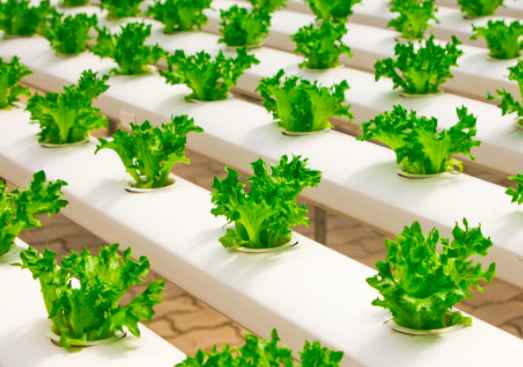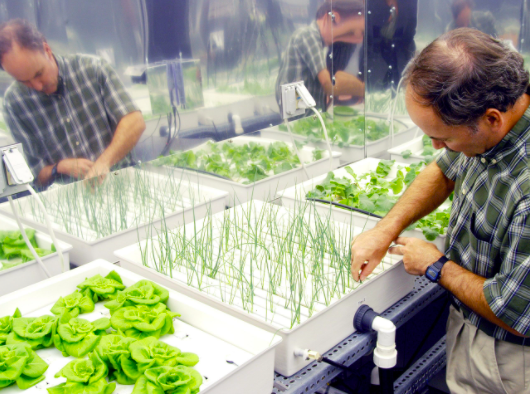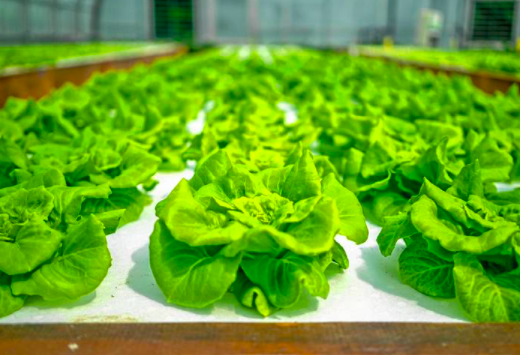Hydroponics is a method of gardening that does not use soil, but instead grows plants in a water and nutrient solution. Plants and vegetables can be grown more easily and year-round in a hydroponics system. Typically, plants cultivated this way yield more, need less space, and conserve soil and water. If you are an apartment dweller who does not have an outdoor gardening plot, this device is a perfect solution. You will need to monitor many factors in the growing phase, such as lighting, water quality, air circulation, and more.

For beginners, four methods are suitable: the wick system, the water culture scheme, the drip system, and the ebb and flow system. The nutrient film technique and the aeroponic method provide more sophisticated systems. Greens such as lettuce, spinach, Swiss chard, and kale are the easiest plants to start with; herbs such as basil, parsley, oregano, cilantro, and mint; and fruit plants such as tomatoes, strawberries, and hot peppers.
Because of its more natural approach to the use of resources than the traditional growing methods, hydroponic gardening is rapidly becoming a common choice for many growers around the world. There are a few of its many advantages here:
- Hydroponics helps plants to grow up to 50 percent faster than they can in the soil by having constant and readily available nutrients. Also, fresh produce can be harvested throughout the year from a hydroponic greenhouse.
- In contrast to conventional soil gardening, hydroponic gardening, perfect for both the environment and the grown plant, practically removes the need for herbicides and pesticides.
- Any water used in hydroponic gardening remains in the system and can be reused, eliminating the need for a continuous supply of freshwater!
- Arable land is also in short supply and space for gardens tends to decline. Hydroponics also lends itself very well to indoor planting, a perfect choice when you lack yard space or have a small balcony.
In the design of hydroponic systems, there are many methods, but the key elements are basically the same.
Here are the core elements of hydroponics:
Water: filtered items with a healthy pH are necessary. Most plants like water with a pH level of about 6-6.5. With over-the-counter solutions sold at your local hardware, greenhouse, or hydroponic shop, you can change the acidity of your water and make it appropriate.
Oxygen: In traditional farming, from pockets of air in the soil, roots can get the oxygen required for respiration. But in hydroponics You will either need to leave space between the base of your plant and the water reservoir, depending on your hydroponic system, or you will need to oxygenate your container (think of bubbles in a fish tank), which you can do by purchasing an air stone or installing an air pump.
Root Support: Even if you don’t need soil, the roots of your plant always need a bit of something to hang on to. Vermiculite, perlite, peat moss, coconut fibre, and rockwool are common materials. Keep away from materials that can compress (like sand) or retain no moisture (like gravel).
Nutrients: To remain healthy and efficient, your plant will need plenty of magnesium, phosphorus, calcium, and other nutrients, just as plants growing in the field need healthy soil and fertiliser. When you grow plants without soil, it is important to include this “plant food” in the water that feeds your plants. While you can make your own nutrient solution technically, buying mixtures online and in stores is simple.
Light: You might have to invest in some special lighting if you’re growing your plants indoors. For the amount of light it requires and for the location of lights, each form of plant would have a different requirement (typically referred to as Daily Light Integral or DLI)
A healthy life is lived by plants grown in well-managed hydroponic systems. Plants spend more time growing upwards and less time and energy growing extensive root systems to search for food, because roots are bathed in all the nutrients they need.

Growth rates differ depending on the type of system and the standard of treatment, but with increased crop yield, hydro plants can mature up to 25 percent faster than the same plants grown in soil to boot.
Currently, hydroponic systems use less water than conventional systems based on soil. This is because closed systems are not subjected to the same evaporation rates. In addition, the water used in hydroponic systems can be filtered, repopulated with nutrients, and fed back to plants so that water is recycled instead of wasted constantly!
Don’t indoor hydroponic plants require other “resources”? Pesticides and other potentially harmful chemicals are not required as much in hydroponic systems as many of the pests and plant diseases occurring outdoors in soil-based farms are protected from hydro crops.
How to do Hydroponics in India
Hydroponics is something that is gaining traction in India and farmers and people alike are understanding the benefits of it! Before starting your own hydroponic farm, you can read more about it here and must go through these key precautions:
- Although almost everything can be grown hydroponically, some vegetables in hydroponic systems thrive more than others. Pick plants such as cucumber, tomato, capsicum, strawberry, lettuce and leafy greens that don’t mind moisture and that don’t get too big for their setup.
- Also, depending on the size, robustness and root development of the plants to be grown and the configuration of the system, when setting up a hydroponic garden, one must decide whether to use only a solution culture or some sort of growth medium.
- Plants with shallow roots do well in solution cultures, like leafy greens. On the other side growth media such as foam, coconut husk, sponges, and peat moss work better with plants with deep roots such as beets, and heavy vegetables such as cucumbers.
- Flowering and fruiting plants often require sunlight exposure, while leafy greens grow well even under cheap fluorescent lights put above them.
Now let’s discuss some ways by which you can make a hydroponics system at home!
WICK METHOD OF HYDROPONICS
- Set up a reservoir with water. Build water and nutrient-filled reservoir. Underneath the tray containing your plant and growing medium will be this reservoir.
- Connect wicks to the tray that is rising. Through holes in the bottom of the growing tray, you will need to link one or two wicks. Use a drill or screwdriver if you need to build holes in the growing tray. The wicks will soak the reservoir water and pull the wick up into the rising medium in the tray.
- Set up a growing tray. Above the water reservoir, the growing medium containing a seedling is set. Use a medium that will not drain too easily and will most efficiently utilize the wick’s capillary action, such as vermiculite, perlite, and soilless mixes.
- Set up, if possible, a light fixture. Skip this step when using natural light. Otherwise, above the rising tray, set up a light fixture. Set it 24 inches away from the plants while using incandescent light bulbs. Not as hot are LED and fluorescent lights; position them 6 and 12 inches from the plants, respectively.
AQUAPONICS
For vegetables and fish, a small yard, a corner in a community garden, or an unused room in your home can easily be converted into a thriving aquaponics farm. In a symbiotic climate, an aquaponic system blends elements of aquaculture and hydroponics by placing fish waste to work as fertilizer for crops. With little or no waste and no need for fertilizer or chemicals, the device is largely enclosed.

In a 3ft by 5ft (1m x 2m) area, a typical household-sized vertical aquaponic system will suit. From the fish tank, a small pump pulls nutrient-rich water to the tops of the vertical columns. When it falls down into the tank, the water trickles down through the roots of the plants, absorbing oxygen from the air.
VERTICAL HYDROPONICS
- Setup and aeration of the water tank. The reservoir with the water and nutrients is located immediately below the flood tray’s stand. To oxygenate the water, you add an aeration bubbler to the reservoir.
- The filling tube, drain tube, and pump are related. A filling tube and a drain tube connect the reservoir to the tray. A submersible pump that regulates the flow of water into the flood tray is connected to the filling tube. The drain tube helps gravity, following floods, to draw the water back into the reservoir so that the water can be reused. You may not need a timer, since it is constantly pumping the water, unlike the ebb and flow methods.
- Set up the rising tray. This method utilizes tubes or channels for the growth tray instead of a flat tray. This tube makes it easy to set it at an angle and to ensure that the solution of nutrients flows directly to the roots. To suit the net pots or seedlings, you can use a round tube or pipe of PVC with holes drilled.
- Set up, if possible, a light fixture. Skip this step when using natural light. Otherwise, above the rising tray, set up a light fixture. Set it 24 inches away from the plants while using incandescent light bulbs. Not as hot are LED and fluorescent lights; position them 6 and 12 inches from the plants, respectively.
Simply put, in large amounts, in the smallest space, and in a sustainable way, hydroponics will produce the healthiest food possible. Hydroponics not only meets all the objectives set by organic farming, but also goes a step further by giving people the opportunity to grow food in areas where conventional agriculture is simply not feasible. Read more about hydroponics here and start now!


One Response
Nice details, good for startups, we are growing leafy greens on roof top in NFT system, sufficient enough for the family .
We build nft systems for passionate aspirants as well.